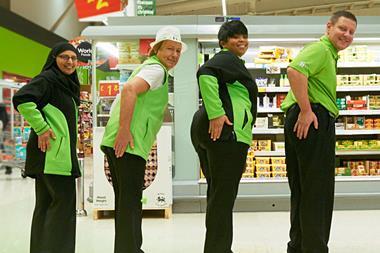Retailers fighting to grab shopper attention are wising up to the power of bespoke digital signage, says Warren Lewis
Digital signage is gaining ground and rapidly.
More than 46,000 stores are now using digital signage compared with 12,500 in 2007, and that figure is expected to rise to 58,000 by the end of 2011, according to a survey for LG Electronics by POPAI.
If retailers are to positively influence consumer buying decisions, the precise location of screens in shops is critical. The research shows that point of purchase is one of the most popular locations as it is easier to capture the attention of consumers there. It also shows that the digital signage market is becoming more sophisticated.
With the growth of new networks that are predominantly mute, there has been an overall reduction in the proportion with audio. Retailers have also come to realise that the use of recycled adverts from broadcast media is often ineffective, not only because it is inappropriate in a retail environment, but also because it quickly irritates staff, who sometimes even turn the feature off.
What works is bespoke content that is updated regularly. Most (58%) is now updated weekly with 25% updated daily and more than 20% live or hourly.
The second sign of sophistication is the increase in usage of WAN/LAN and internet to deliver content. More than half of those surveyed used such networks. More touchscreen technology is also being introduced. Only one in five retailers use interactive screens, but nearly half of those surveyed said they would install touchscreen technology in 2011, with a further 25% considering it.
Touchscreen technology has the potential to bring huge benefits to customer service by acting as an interactive guide to a product or as a service finder in a department store or shopping centre.
Some retailers are now considering the possibility of 3D digital signage, which looks to be the next must-have in technology.
Retailers are realising that to achieve an increase in footfall and ultimately of sales, stores and shopping malls will have to provide customers with a more engaging shopping experience. Digital signage solutions offer a high-quality yet cost-effective way of doing this.
Warren Lewis is commercial director of B2B at LG.
Digital signage is gaining ground and rapidly.
More than 46,000 stores are now using digital signage compared with 12,500 in 2007, and that figure is expected to rise to 58,000 by the end of 2011, according to a survey for LG Electronics by POPAI.
If retailers are to positively influence consumer buying decisions, the precise location of screens in shops is critical. The research shows that point of purchase is one of the most popular locations as it is easier to capture the attention of consumers there. It also shows that the digital signage market is becoming more sophisticated.
With the growth of new networks that are predominantly mute, there has been an overall reduction in the proportion with audio. Retailers have also come to realise that the use of recycled adverts from broadcast media is often ineffective, not only because it is inappropriate in a retail environment, but also because it quickly irritates staff, who sometimes even turn the feature off.
What works is bespoke content that is updated regularly. Most (58%) is now updated weekly with 25% updated daily and more than 20% live or hourly.
The second sign of sophistication is the increase in usage of WAN/LAN and internet to deliver content. More than half of those surveyed used such networks. More touchscreen technology is also being introduced. Only one in five retailers use interactive screens, but nearly half of those surveyed said they would install touchscreen technology in 2011, with a further 25% considering it.
Touchscreen technology has the potential to bring huge benefits to customer service by acting as an interactive guide to a product or as a service finder in a department store or shopping centre.
Some retailers are now considering the possibility of 3D digital signage, which looks to be the next must-have in technology.
Retailers are realising that to achieve an increase in footfall and ultimately of sales, stores and shopping malls will have to provide customers with a more engaging shopping experience. Digital signage solutions offer a high-quality yet cost-effective way of doing this.
Warren Lewis is commercial director of B2B at LG.













No comments yet